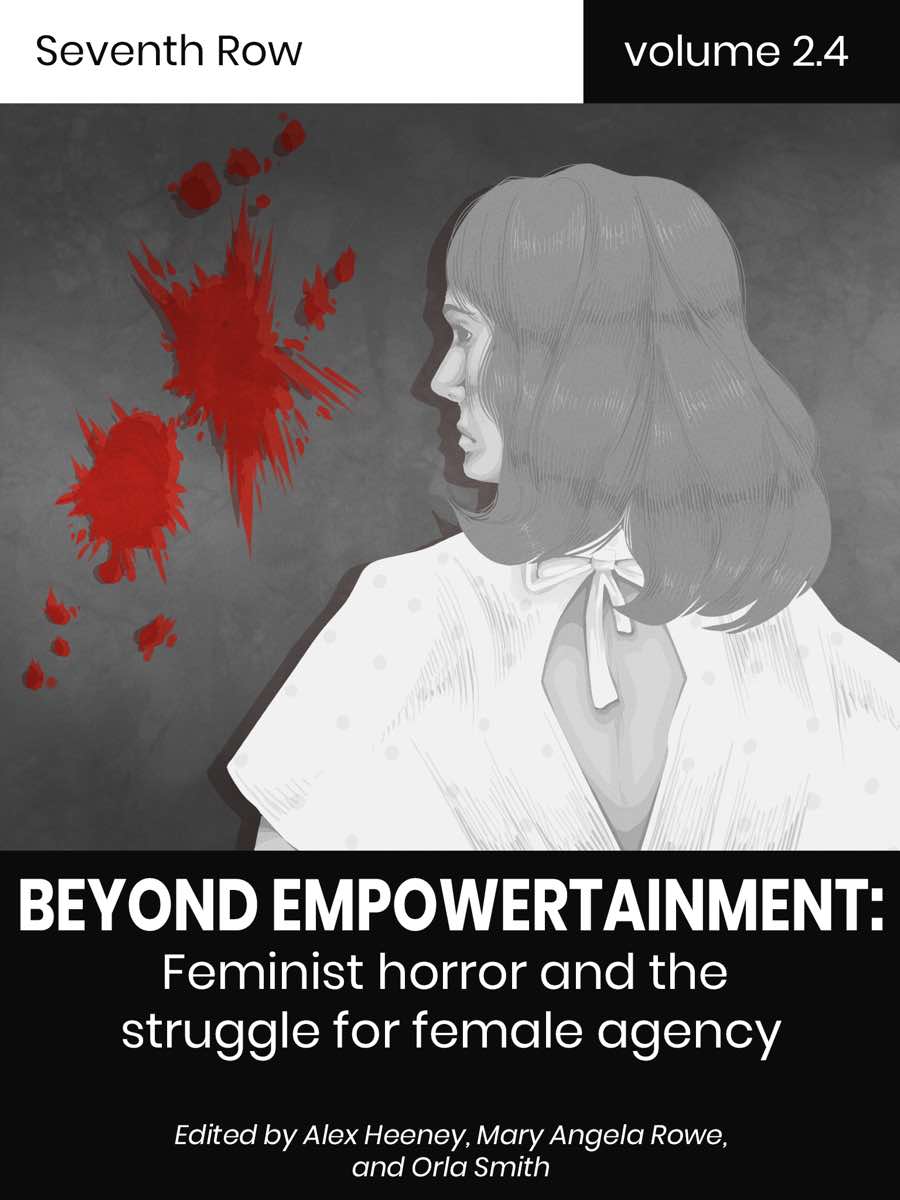The first animated feature out of Portugal, Nuno Beato’s My Grandfather’s Demons, uses digital and stop-motion animation to tell a story of intergenerational trauma on the border between reality and fairytale.
For more great genre films about women, get a copy of our ebook Beyond Empowertainment: Feminist Horror and the Struggle for Female Agency.
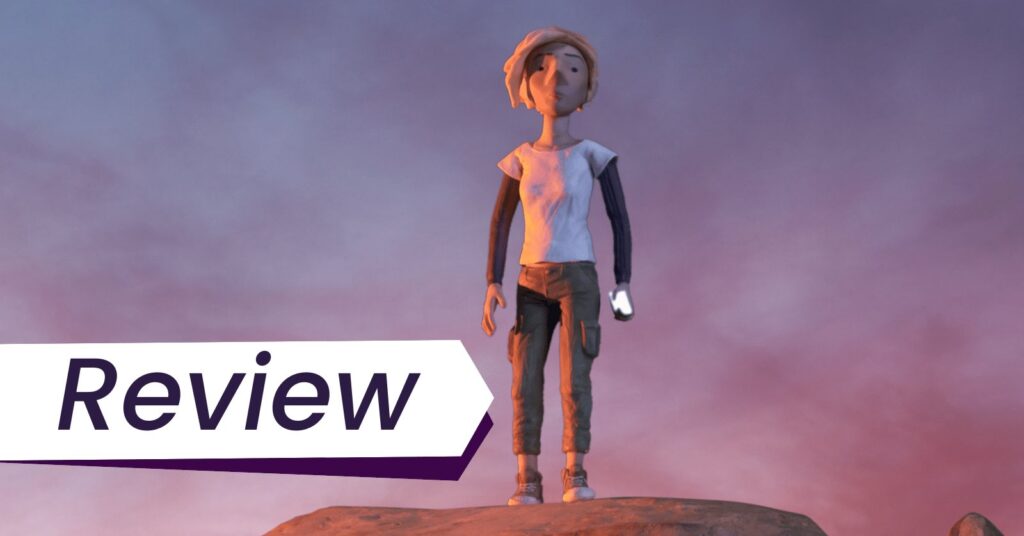
Discover one film you didn’t know you needed:
Not in the zeitgeist. Not pushed by streamers.
But still easy to find — and worth sitting with.
And a guide to help you do just that.
In his feature debut and Portugal’s stop-motion animation feature debut, My Grandfather’s Demons, Portuguese animator Nuno Beato uses two types of animation — digital and stop-motion — to depict the two worlds thirtysomething Rosa is caught between, and the family lore she must sort through to put her intergenerational trauma to rest.
The film opens with Rosa’s world in Lisbon, depicted with digital animation — the characters are 3D in a 2D background — where the world feels sterile and defined by exhausting, emotionally draining routine. Every day, Rosa awakes in her fancy new condo where her plants get automatically watered as she showers herself. At work, in an open concept office, her performance metrics are publicly visible in real time to all her co-workers, as well as any rewards she may receive for good work.
Her job (and life) is like a constant video game of levelling up on the corporate treadmill. It leaves her no time or energy to think about anything else. When she spends one night dancing to celebrate her promotion, she resents choosing wearing heels over sleep. She must cut her actually fun night out though short when an email from the boss demands work on rush. Text messages, emails, her phone interrupting every thought, and a complete lack of privacy define Rosa’s world. Because of the animation style, her offline world is already a 2D digital one of sleek, clean lines. Living in the city and in her screens feel like one and the same. By all outward signs, Rosa is succeeding, but she feels like she’s drowning.
When Rosa gets the devastating phone call about her dear but slightly estranged grandfather’s death, she returns to her childhood home — and all the demons that come with it. There’s a gorgeous, seamless transition between the digital animation of Rosa’s city life, and the claymation of her grandfather’s rural world. It’s as if Rosa and the place come to life. It’s like she’s entering a portal into a different world.
Rosa’s life about to change dramatically. The change in animation style makes the grandfather’s world feel somewhere between reality and fairytale, both literal and metaphorical. Everything is made of clay. The people in town seem both part of the land and more tactile, more real.
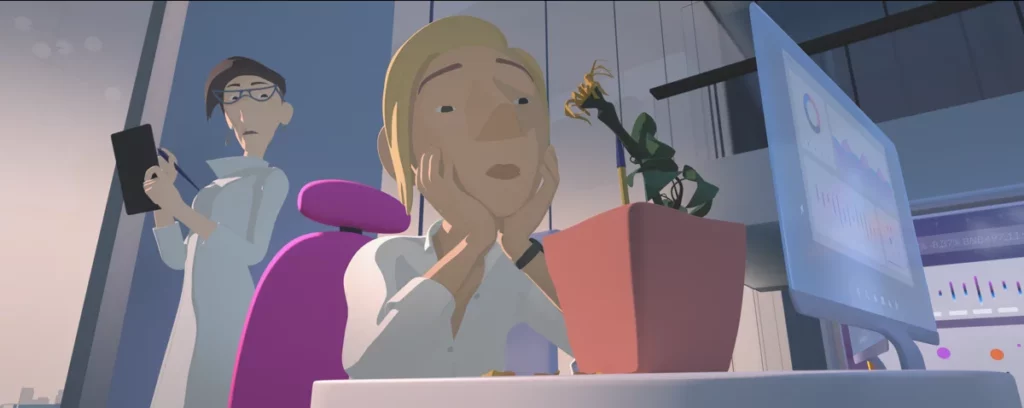
Which is the fever dream: Rosa’s city life or homecoming to the past? As a stop-motion animated figure, Rosa’s grandfather has a demon-like appearance with a triangular head and four arms. Is the country a world of dreams? People in town talk about Rosa’s grandfather as being cursed. But is he literally a demon, or just metaphorically? Is it because he was a horrible person, he hated himself, or both? Yet Rosa’s memories of her grandfather are so full of warmth. The richness and imperfections of the claymation make her grandfather feel all the more human, unlike the tales told about him.
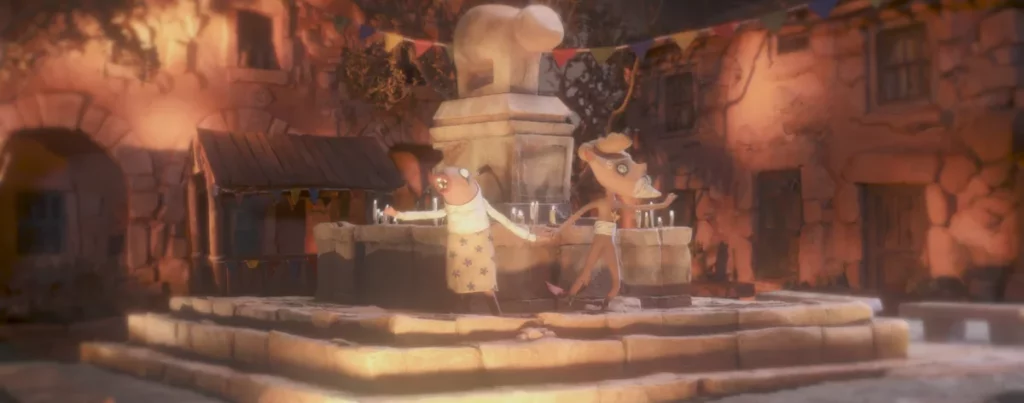
Rosa’s homecoming, however, is not particularly welcoming. Villagers refuse to make food deliveries to her home. People put manure on her parked car when she’s not looking to let her know how unwanted she is. Most of the rest just sneer at her. It’s more about their feelings toward her grandfather than toward Rosa, whom nobody really knows or remembers. It forces Rosa to reconcile her grandfather’s public persona with the kind and gentle man who showered her with love.
A lot of what follows is predictable. The city girl goes home to the country, planning to sell off the land, only to fall in love with the place and the people. She finally builds community. Some of the plot machinations involving how Rosa will win back the love of the town and put her grandfather’s demons to rest are contrived. None of this really matters though, because it’s all emotionally resonant. The claymation ensures none of her actions need be taken fully literally.
From befriending her neighbours, Rosa realises that the water in the village has disappeared. The villagers must walk miles each day for water. Everyone believes her grandfather had something to do with it. They claim it’s a curse; eventually, we’ll realise it is more of a trick of engineering. But in a way, both are true. Who you are is as much about the mythology around you, created by you and your community, as it is the exact truth.
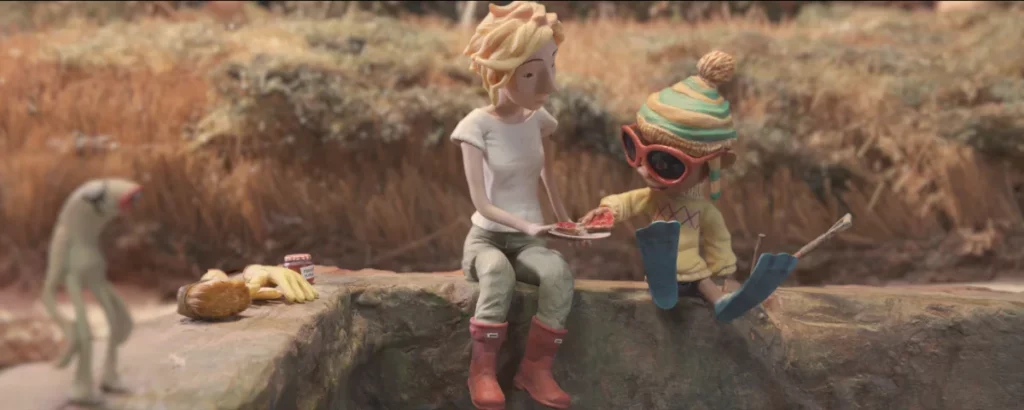
Rosa becomes obsessed with solving the water problem. To do so, Rosa must listen to her heart, think back through her memories, and use her techie problem solving skills. Photographs of her grandfather come to animated life to send us and Rosa into flashbacks. Letters come literally out of the woodwork like messages in a bottle. In stop-motion animation, water doesn’t flow like you’d expect. It’s somehow more viscous, more shiny, and thus, even more fantastical. It’s something seemingly banal that the animation renders otherworldly, just like her human grandfather has taken on mythic, demonic proportions.
The best animated films — from The Burden to Flee — are films that you can’t imagine in any other format. The same is true of My Grandfather’s Demons, which uses animation to live between the real and the metaphorical. Though My Grandfather’s Demons never touches directly on the pandemic, as Beato has said to Animation Magazine, the film feels particularly timely now. When the world stopped for two years, everyone started re-evaluating how they live their lives. The animation style vividly reflects how we live our lives on screens in the city, and on the earth in the country. It’s unfortunate that most major festivals don’t screen animated films, as a general rule. My Grandfather’s Demons deserves to reach a broader audience. It’s exactly what I look for in the Fantasia Film Festival programming.
You could be missing out on opportunities to watch great films like Nuno Beato’s My Grandfather’s Demons at virtual cinemas, VOD, and festivals.
Subscribe to the Seventh Row newsletter to stay in the know.
Subscribers to our newsletter get great new streaming options in Canada, the US, and the UK.
Click here to subscribe to the Seventh Row newsletter.
